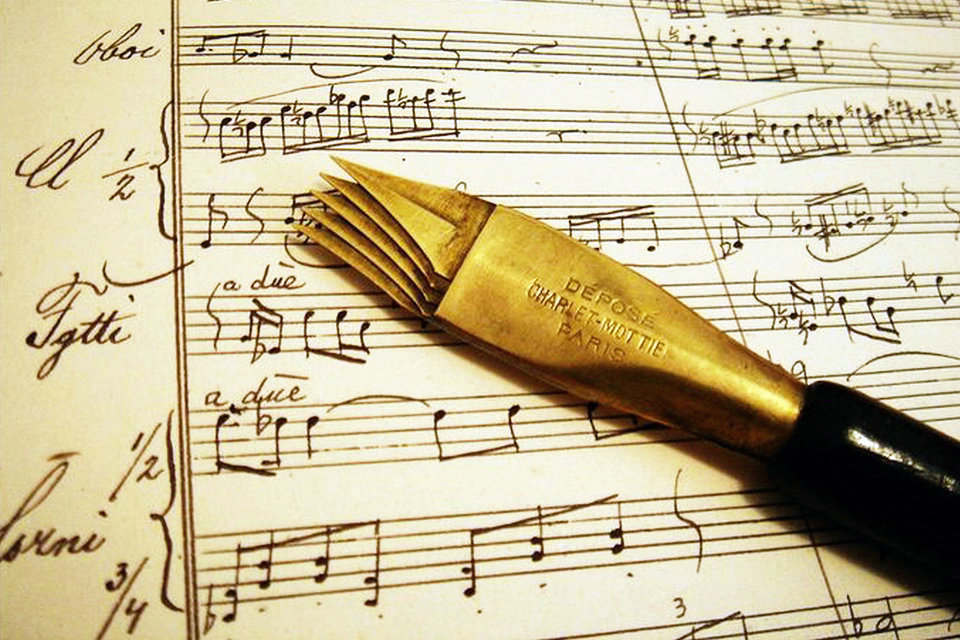

A rastrum (or raster) is a tool at traditional media recording in music, it consists of brass and looks like a fork with five teeth. A rastrum is a five-pointed writing implement used in music manuscripts to draw parallel staff lines when drawn horizontally across a blank piece of sheet music. Rastra were used to draw stave lines on paper that had not been pre-ruled, and were widely used in Europe until printed staff paper became cheap and common in the nineteenth century.
A rastral as a grave knife in the traditional music sheet engraving is made of brass or steel and looks like a fork with five prongs. For sheet music printing, it was used to score the staff lines with a ruler in the throat plate. Then the notes were hammered with sheet music.
There are ten-line rastrals for piano systems and other ruling machines, each of which could be used to prepare an entire score page with a different grouping of systems. Meanwhile, this technique has become very rare. The Computer Jotter set has replaced these tools.
Some rastra hold markers for use on whiteboards. Some rastra are able to draw more than one staff at a time.
In recent years, rastra made of five ballpoint pens have been marketed to students and composers. It was common in primary and secondary schools to use rastra that use chalk on a chalk board for music education. They may be called staff liners. An alternative is to use a chalk board with staff lines etched in or taped on.
Rastrology, the study of the use of the rastrum, is a branch of music manuscript studies that uses information about the rastrum to help find the date and provenance of musical materials.
The Rastral is also available as a parallel arrangement of five nibs, which is used by musicians to make plain paper from plain writing paper. For this use, the five tips on the lower side have a fine gap.
Another variant is the so-called “Stravigor”, a wheeled instrument that Stravinsky attempted to patent around 1911.He used them extensively in his compositional sketchbooks.
The composer Igor Stravinsky preferred an individual design of the pages of notes and constructed a Rastral as a writing scooter, which he called Stravigor.
Lining with ink is hardly common today. A musician who does not have music paper at hand can glue together five lead pencil case mines in parallel with adhesive film, or ballpoint pen refills the thickness of those used for multicolor ballpoint pens.
The term “Rastral” is still used in music philology in the composition Rastralweite: This denotes the distance between the two outermost staves. Normally, the ratchet width is between four and eight millimeters for engraved notes, depending on the context. For handwritten notes, it can be much larger.